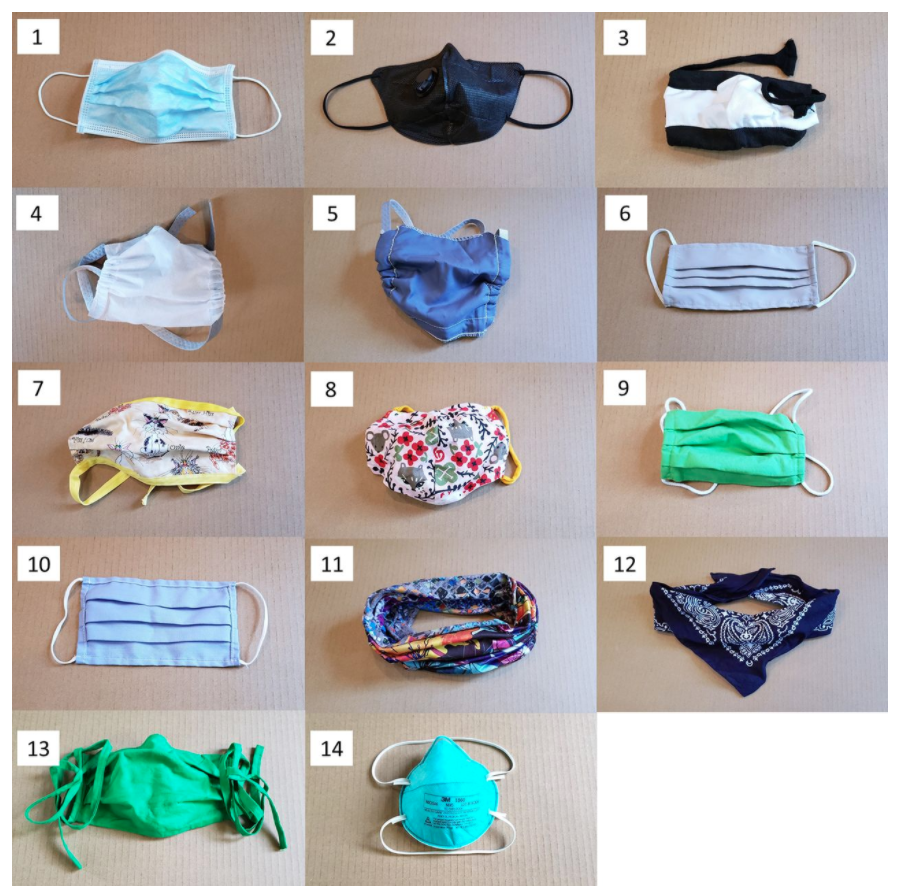Abby HaglageAugust 10, 2020, 7:30 PM
The U.S. hit another grim milestone on Monday with more than 5 million Americans now infected with the coronavirus. Although there is a push to increase testing and develop a vaccine, experts continue to suggest that if all Americans wore masks, the pandemic could be brought under control “within weeks.” In the spirit of that mission, a new study published in Science Advances is shedding light on which masks are most effective — and which may actually be hurting the effort to curb COVID-19.
The analysis, carried out by researchers at Duke University School of Medicine, relied on an “optimal measurement method” that uses a laser beam and cellphone camera to track the number of droplets that emerged from an individual while he or she wore a mask. Of the 14 masks, the two that proved least effective were a bandanna and what the researchers refer to as a neck fleece, also known as a neck gaiter.
The most secure mask, an N95, led to a droplet transmission of below 0.1 percent. But handmade cotton and polypropylene masks, some of which were made from apron material, also proved effective, with droplet transmission ranging from 0.1 percent to 0.4 percent. One mask, which was knitted, released a higher number of droplets, from 0.1 percent to 0.6 percent. But none of the masks compared with the neck fleece, which had 110 percent droplet transmission (10 percent higher than not wearing a mask).
The researchers explain how these masks may actually spread more of the virus than not wearing one at all. “We noticed that speaking through some masks (particularly the neck fleece) seemed to disperse the largest droplets into a multitude of smaller droplets … which explains the apparent increase in droplet count relative to no mask in that case,” they write. These small droplets could prove extremely dangerous in terms of transmission. “Considering that smaller particles are airborne longer than large droplets (larger droplets sink faster), the use of such a mask might be counterproductive,” they add.
Dr. Amesh Adalja, a senior scholar at the Johns Hopkins Center for Health Security, says the study is an important one for Americans to consider. “People really don’t understand that not all face coverings are equal, and that there are some that are going to be more or less effective,” says Adalja. “And I think that when you’re making these decisions, it’s important to have data behind them.”
Given the rate of droplet transmission from neck fleeces and bandannas, he suggests that Americans move away from both coverings immediately. “I do think they should be abandoned, especially given that gaiters were shown to increase transmission,” says Adalja. “Not every mask is going to be equivalent. … I think that many people are just wearing these face coverings to check a box and not realizing that in order to serve a purpose they need to be effective.”
For those who are still confused about why masks are necessary, he notes that asymptomatic spread is one of the most important factors to keep in mind. “There are many people out there that don’t know that they’re infected, and the face coverings are one way to give people the assurance that there is some source control going on,” says Adalja. “If everybody knew their status, that would be a different story, but the fact of the matter is most people don’t know whether they’re infected or not.”
Better testing, Adalja adds, would potentially lessen the need for masks. But until then, they’re vitally important to stopping the pandemic. “If we have rapid tests that we can know the minute we step outside whether we’re infected or not, that’s one thing, but we’re not anywhere near that,” says Adalja. “So for now, this is the measure we’re left with.”
For the latest coronavirus news and updates, follow along at https://news.yahoo.com/coronavirus. According to experts, people over 60 and those who are immunocompromised continue to be the most at risk. If you have questions, please reference the CDC’s and WHO’s resource guides.
Read more from Yahoo Life














